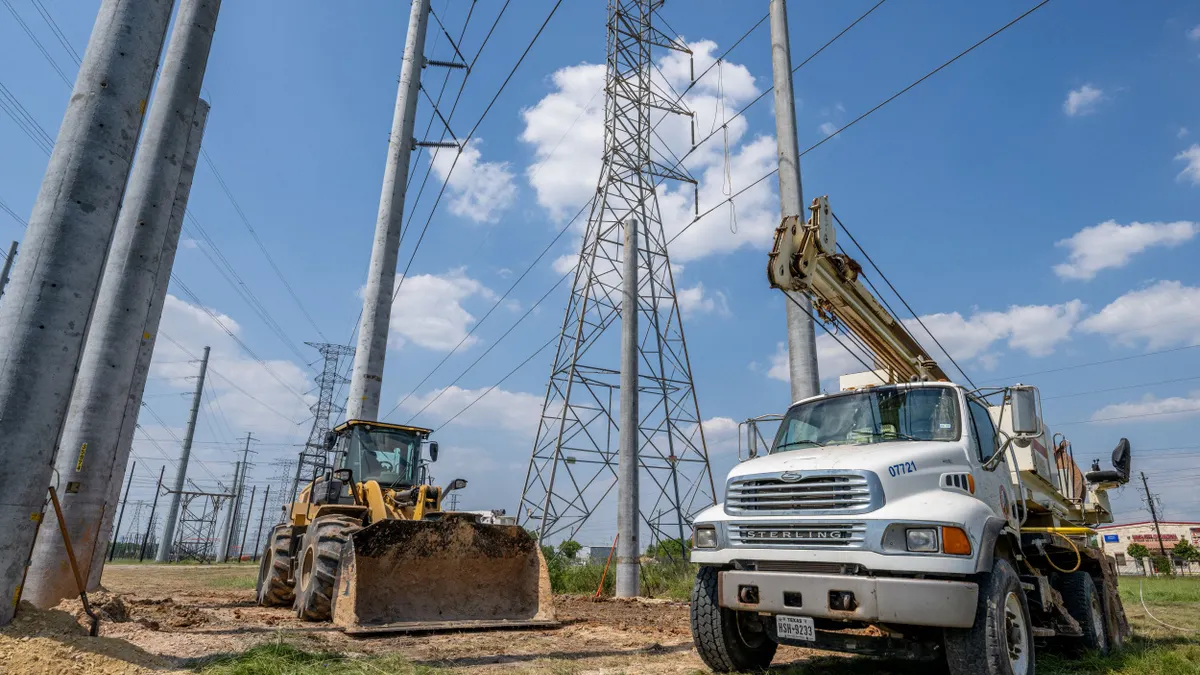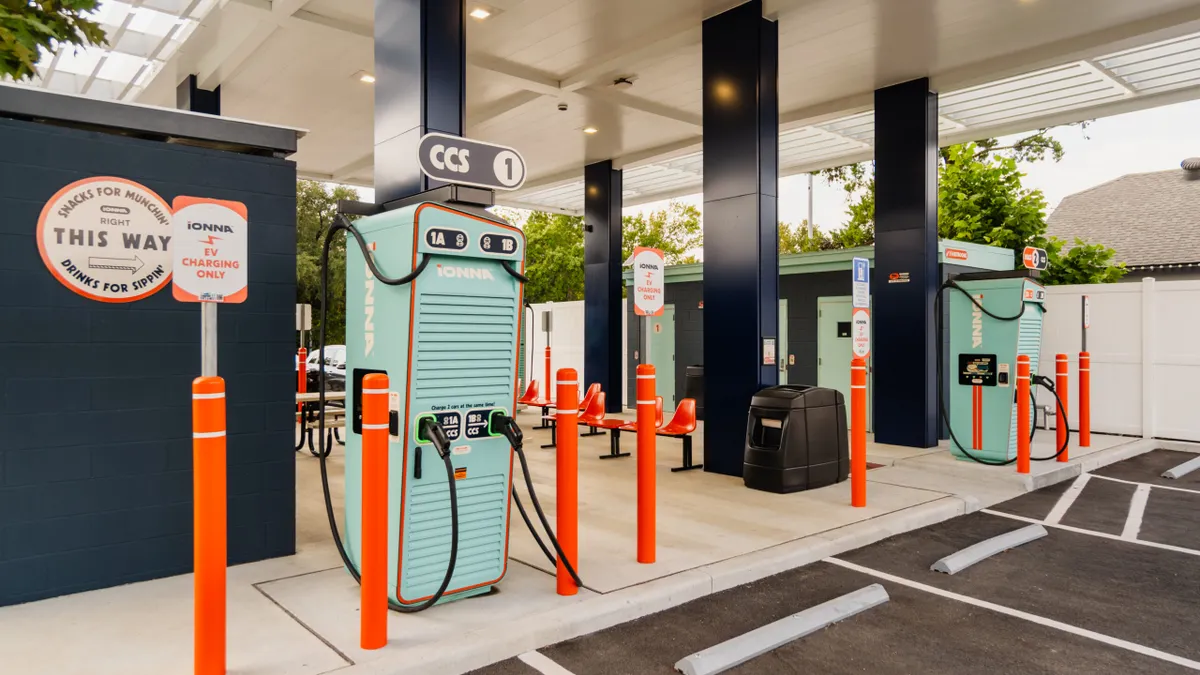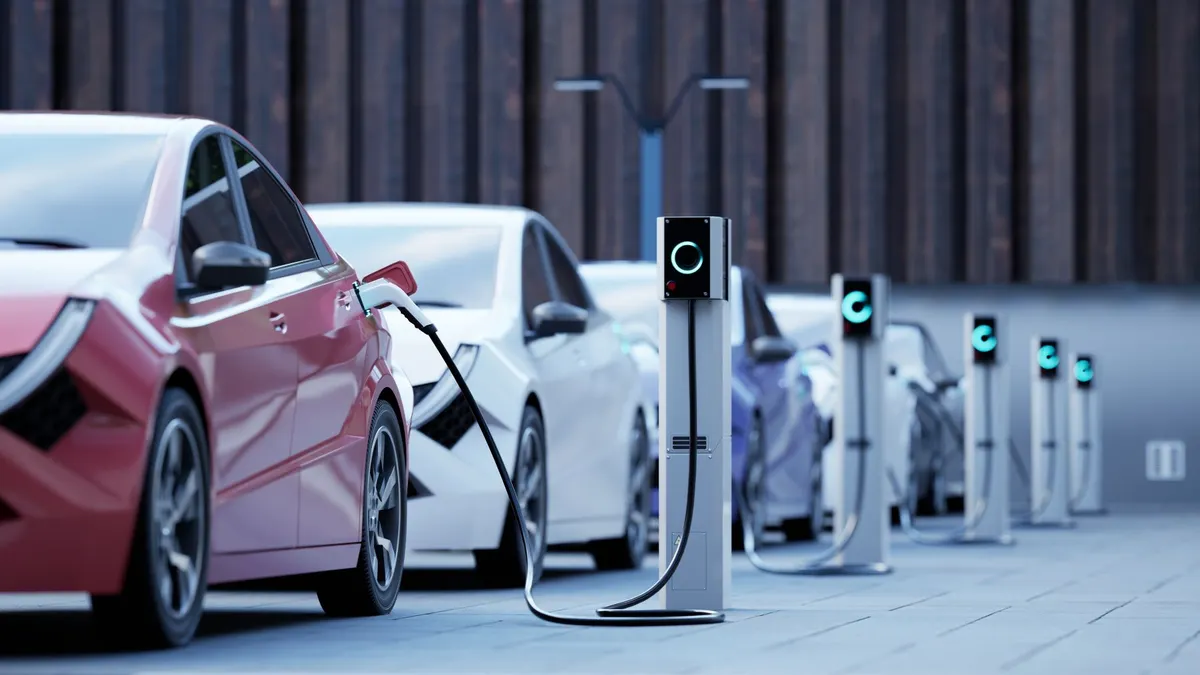As commercial and industrial facilities managers focus on the transition to more sustainable operations, Dan Arant has been providing guidance. Arant, manager of North America sales at the energy and ESG division of Brightly, works with facilities managers to meet their sustainability objectives and make progress on their journey toward electrification and decarbonization. Brightly, a U.S.-based provider of asset and maintenance management solutions, was acquired by Siemens Smart Infrastructure for $1.57 billion last June.

Arant, who has certifications in energy management from the Institute of Energy Professionals and the Association of Energy Engineers, has been with Brightly for more than six years, rising through the ranks from senior energy specialist to his current position. In an interview with Facilities Dive, Arant discussed a variety of paths toward decarbonization such as shifting away from fossil fuel-consuming equipment, installing heat pumps or microgrids, and infrastructure planning. He also addressed the role of government subsidies and legislation in advancing sustainability.
Editor’s note: This interview has been edited for length and clarity.
FACILITIES DIVE: Heat pump adoption in the U.S. varies from state to state based on factors like climate and incentives that can offset upfront costs. Overall, what is the level of readiness to retrofit buildings with heat pumps in this country?
DAN ARANT: Maybe we're ready. I think it's the right question to ask. You’ve got to do engineering assessments on how the facility was designed to be heated or cooled. You’ve got to look at capacity issues. There are also certain restrictions. [For example], heat pumps just aren't effective in very cold climates. But I think we know enough about the technology to know that the real kicker is whether the local grid can sustain a wholesale switch from gas-fired heating systems to electric heat pumps. In some cases, yes. [But] in a lot of cases, we're just not ready for it. There needs to be a phased approach to [heat pump adoption]. It's totally normal to look at large fuel-switching projects or large transitions in the industry over a multi-decade period and plan for it. But it has got to be a collaborative plan.
How can utilities, organizations and government agencies effectively collaborate to transition to increased electrical consumption, especially during peak demand periods?
The local utility [has] to be prepared for an influx in electrical-consuming pieces of equipment. And then there also has to be a financial preparedness for the organizations to be able to make these switches. There will be a need for collaboration between utilities and state and federal government agencies on funding projects that involve infrastructure upgrades. In terms of collaborations between utilities and their customers, let’s say a local grid can handle the wholesale fuel switching to electricity. What we're already starting to see is that it impacts the demand curve [in terms of] what time of day the utilities must be prepared to provide electricity. And that’s going to shift when peak demand periods happen. We have to be prepared for that as well.
"If I know what [pieces of] equipment I manage within my facilities, how old they are and what condition they’re in, I can begin to plan replacements. That strategic asset management, at its core, is what an organization should be doing, regardless of climate change or decarbonization strategies."

Dan Arant
Manager of North America sales, energy and ESG division, Brightly
Microgrids are gaining some recognition for their potential to meet decarbonization and resilience goals. What are your thoughts on their economic feasibility?
It's what a lot of the industry is thinking about right now. Our parent company, Siemens, has done a lot of work and planning around grid technology and microgrid technologies. It's an innovative solution [and] there are ways that private industry can support this change. In addition to [using] traditional forms of renewable energy like wind or solar, the focus is shifting toward how we can improve their durability and flatten these demand spikes by looking at battery storage on these microgrids.
Do you believe the facilities industry is ready to implement microgrids?
[We] see these on smaller scales and in smaller communities already. What we must ask is whether we can do this at scale. I think we can. [Given] what we're seeing from a climate change perspective and the demands that are coming down from governments to reduce emissions and get off of fossil fuels, [microgrids] are a valid pathway. [They have not been] tested at scale, but that’s innovation. It’s a plan, a first step. It doesn't come across to me as a dramatic goal, in terms of [other] goals I've seen that have a very short window.
What are some of the top challenges commercial facilities managers are facing as they strive to decarbonize buildings and reduce emissions?
Organizations have been really quick to say they are going to electrify their buildings before they've done a long-range feasibility assessment to understand the costs and the impacts of that switch. They do not understand the current state of the infrastructure that they have. What if they just spent $300,000 on a gas-fired boiler last year? When does that phased rollout of that brand-new piece of equipment happen? It's probably not going to be for another 10 years. [If they] want to get all the lifecycle out of that piece of equipment, that would be about 20 [or] 30 years. So, that's usually the No. 1 concern when I speak directly with facility managers. They are the ones that are tasked with implementing and driving a goal to success, but they weren't the ones who made the decision to hit that goal in the first place. So, they have a lot of questions. A lot of them don't have the data or the information to be able to put together a long-range plan.
What are the foundational steps and key information facility managers should gather to effectively plan for infrastructure improvements and the transition to more sustainable equipment?
At a minimum, [I would recommend] taking a snapshot of your infrastructure, such as every fuel-consuming piece of equipment. What pieces of equipment do I have? What condition is it in and when was it installed? Having all that information in a database, even if you’ve written it down on a whiteboard, is better than nothing. If I know what [pieces of] equipment I manage within my facilities, how old they are and what condition they're in, I can begin to plan replacements. That strategic asset management, at its core, is what an organization should be doing, regardless of climate change or decarbonization strategies. Once facility managers have that snapshot, they can begin to ask what the inflection points are over the next 30 years and how much money they need in the fifth year and the 10th year, and so on and so forth, to be able to either renew pieces of equipment or replace gas-fired equipment with electric counterparts.
What guidance do you have for facilities managers who have just invested significant sums in new gas-fired equipment with long lifespans but are now facing the need to electrify?
It feels like being stuck between a rock and a hard place. As a sustainability professional, I don’t like the idea of wasting utility dollars. I don't like the idea of wasting water. [But] that's what you would be doing if you decide to replace a brand-new piece of equipment. Personally, I wouldn't replace it. I would maintain it to its fullest. But I would have a long-term plan to say, ‘When it retires, we will replace it.’ And that's why I think you'll see this in governmental debates. The [move away from] fossil fuels has to be a multi-decade endeavor. An organization may say, ‘We will take the financial loss and replace that brand new piece of equipment.' Not every organization has the capital to be able to do that.
How do you see the transition from fossil fuel-using equipment to more sustainable equipment and technologies in buildings?
Over the decades, we’ve identified efficient ways of making electricity, and fossil fuels have been an integral part of that. It's the same in our buildings. We've created technologies that are very efficient at consuming fuel as the primary source of energy. I think there will be trade-offs that a lot of [people] are not comfortable with in the near term. We’ve seen this happen with the whole debate around electric vehicles. One is far more effective than the other right now for everyday use. That's because we've had 100 years to develop [that internal-combustion engine] technology for vehicles. It doesn't mean that the future is going to be [ICE] vehicles or gas-fired boilers. It just means that’s the technology we have, which is cost-effective to purchase without government subsidies. If governments really want to speed up development of these new technologies, they have to fund them through subsidies or certain legislative measures.
























